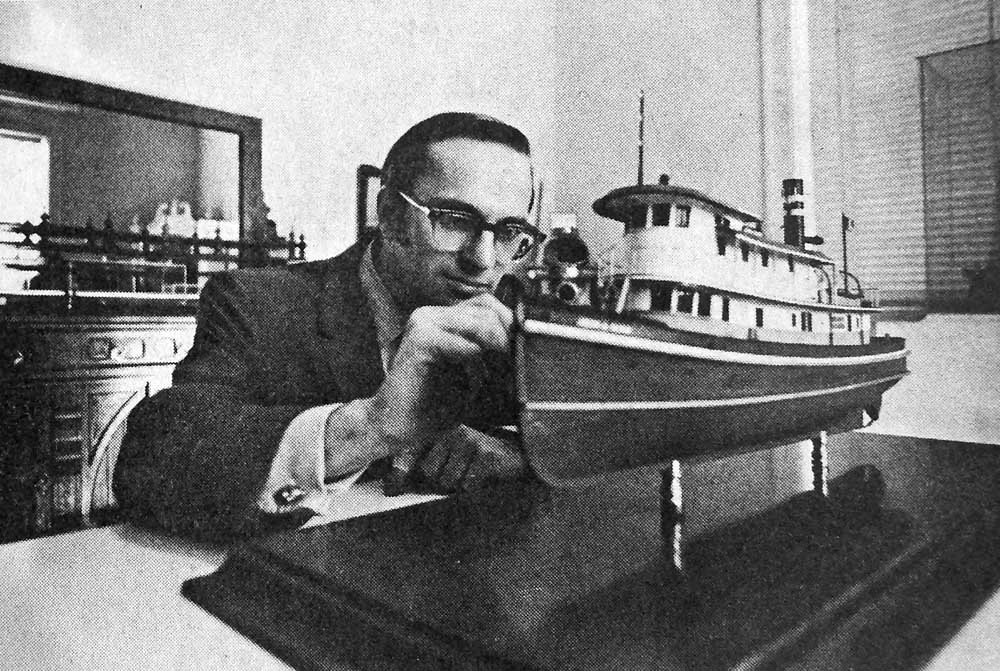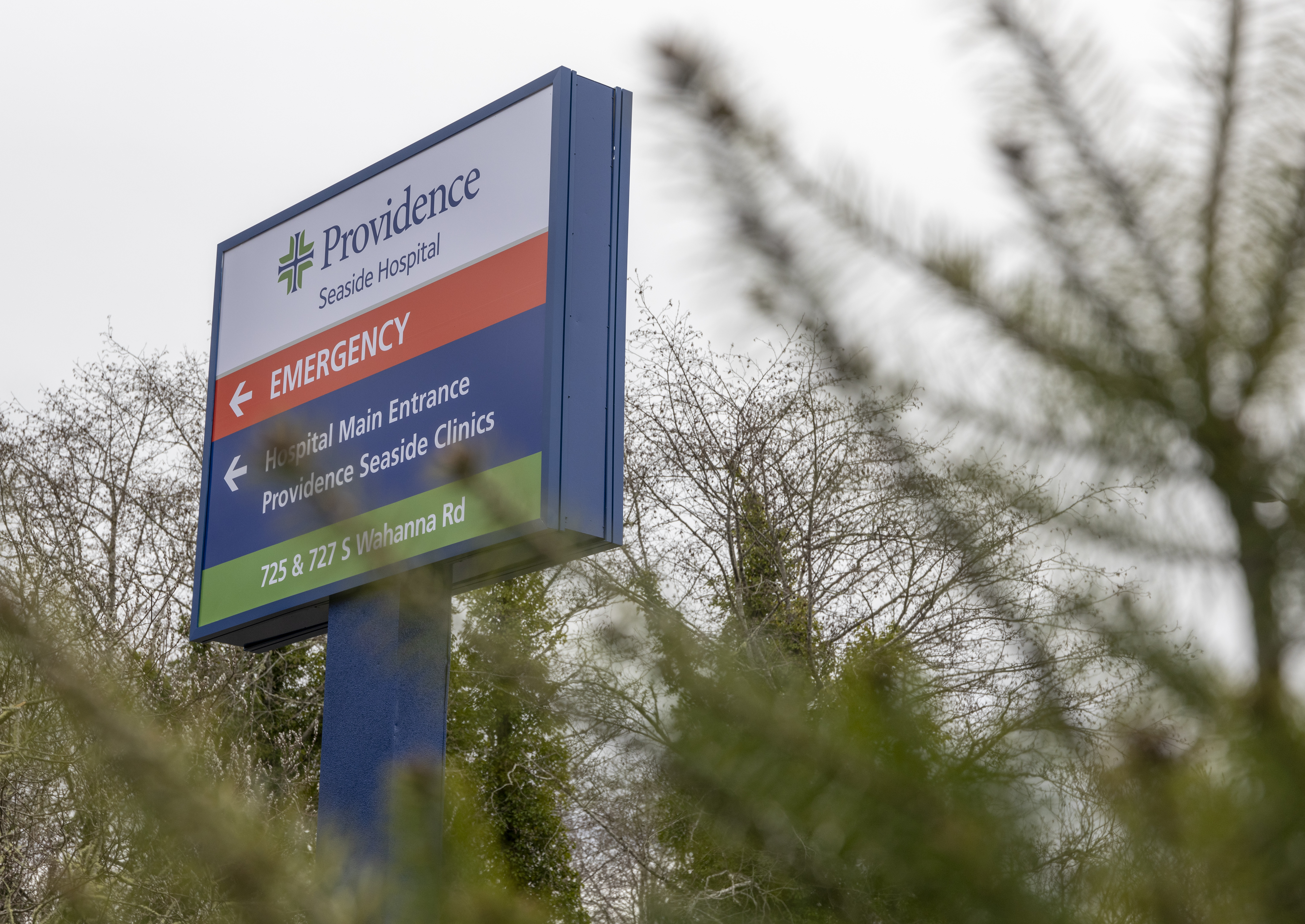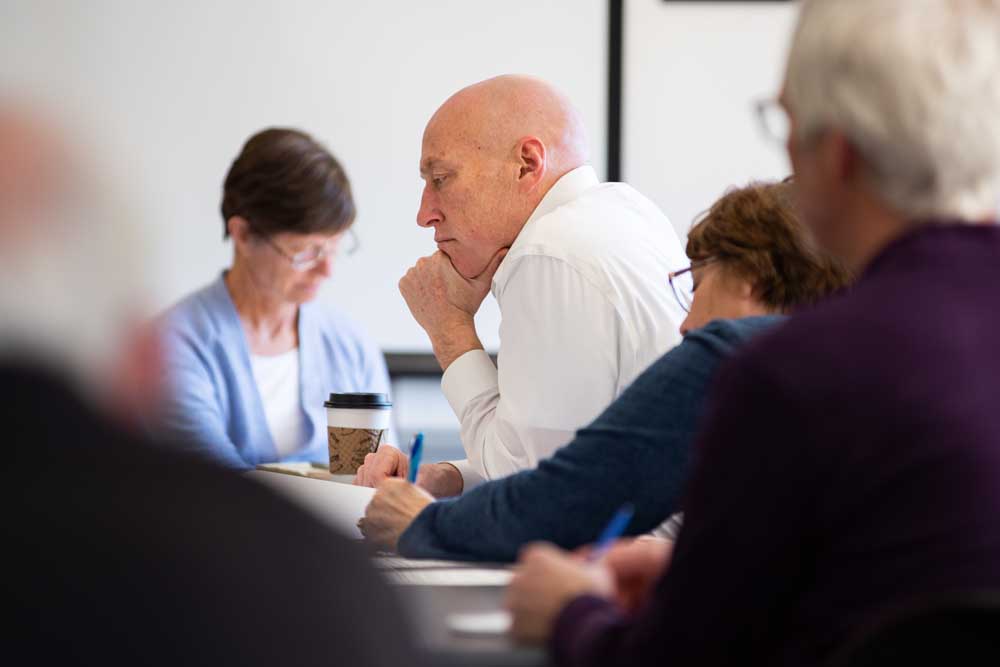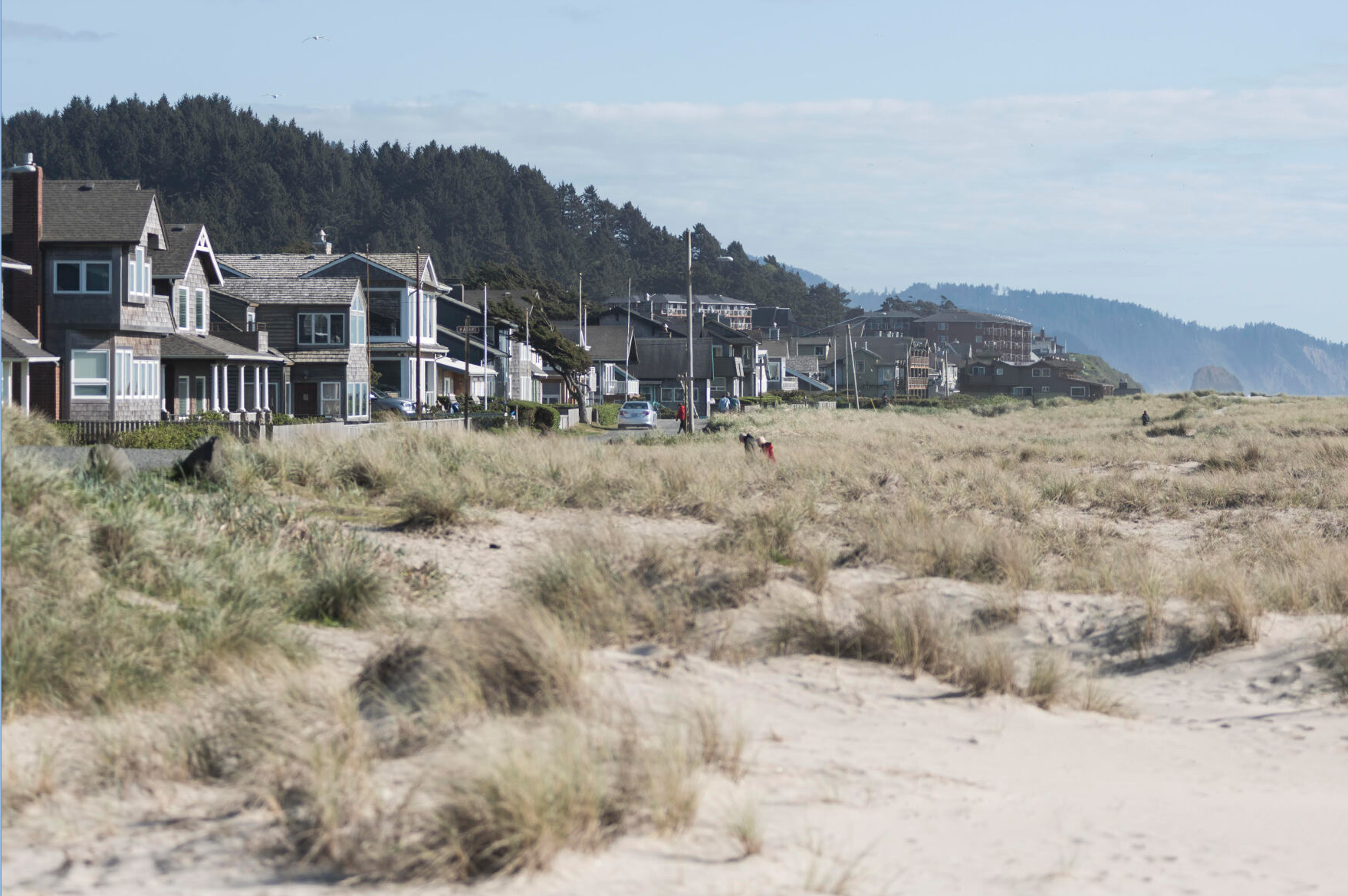Water Under the Bridge: Dec. 10, 2024
Published 12:15 am Tuesday, December 10, 2024

- 1974 — Lloyd McCaffery with his model of the John A. Shaw at the Columbia River Maritime Museum.
10 years ago this week — 2014
SEASIDE — Most people can only claim to know about the nefarious Pearl Harbor attack — a knowledge derived from stories passed down through generations or filed in historical texts. Seaside resident Bill Thomas, on the other hand, is personally acquainted with the world-changing event because he was there and survived.
Through the 93-year-old’s participation in Seaside’s annual Pearl Harbor Remembrance Day event, the community is invited every year on the anniversary of the solemn occasion to reflect on the attack that killed approximately 2,400 people, drew America into a war that lasted until 1945 and left a lasting impression on the country’s collective memory.
Only a week into the crabbing season, the U.S. Coast Guard rescued five fishermen over the weekend, bringing the number of crabbers retrieved from sinking vessels to 10.
The Coast Guard removed five fishermen from the 78-foot fishing vessel Titan Friday after it grounded and began to take on water off the A-jetty on the north side of the Columbia River near Ilwaco, Washington. It was loaded with up to 25 tons of fresh-caught Dungeness crab.
Kevin Leal took a chance on Tongue Point Job Corps Center to learn painting. Then Christy Mather took a chance on Leal, hiring him to help her prepare two early 20th century homes for painting. Leal is one of hundreds of Tongue Point Job Corps students who work with employers either on the North Coast or near their own hometowns each year in work-based learning opportunities.
Tongue Point gathered its employee partners Friday at its campus bistro, giving them a hand for the ones they’ve given Job Corps students. Representatives from Sens. Jeff Merkley and Ron Wyden and Rep. Suzanne Bonamici’s offices attended, sharing their support for anything Job Corps.
The employers arrayed around the tables Friday ran the gamut, from breweries and restaurants to hospitals and foster care homes. Large employers like Clatsop County down to small businesses, like Mather’s, took on interns. Tongue Point has 45 students in work-based learning on the North Coast. Its students average about 340 work-based learning assignments a year.
“It was a win-win, honestly,” said Mather, who operates a historical restoration contracting business with only her mother for help.
Sixth grader Ellie Adams, going on eight hours spent at school Dec. 3, is one of many students at Knappa High School happy to stay after the final bell has rung.
“Mom does day care, so it’s kind of loud,” said Adams, who stays after Tuesdays, Wednesdays and Thursdays to finish homework and avoid the noise of children running around her house. “By the time I get home, I miss all of them.”
After an hour of study time, Adams paints wintry landscapes with art teacher Janet Hockman and helps restart the school’s former student newspaper, The Timber Times, with language arts teacher Madalyn Hatcher. It’s all part of a new after-school program Knappa started to further engage students with study time and an eclectic array of activities.
Helping Adams and a class full of sixth and seventh graders restart The Timber Times are Hatcher and Knappa freshman Emaly Roberts, herself a recently published poet and soon-to-be editor of the newspaper.
“I felt really excited that they asked me to do it,” said Roberts, adding that sports isn’t her thing and that living in Brownsmead often renders other entertainment too far afield.
50 years ago — 1974
When the Columbia River Highway (now U.S. Highway 30) was built into Astoria it swung around the hill south of Tongue Point, well north of its present route, and dropped down into Alderbrook.
In 1924, the State Highway Department contracted for construction of a new route, bypassing Alderbrook and coming into town along Date Street.
The Astoria Kiwanis Club decided to provide ornamental portals on this new road. The club “designed, bought and placed” a concrete pillar on each side of the new road at about the eastern city limits — just east of where the Crest Motel now stands. Each pillar is about 12 feet high and originally was surmounted by an electric light.
In 1939, the U.S. Navy authorized construction of a naval base at Tongue Point, and the northward curve of the highway intruded upon the Navy’s property. The result was a second relocation of the highway at Astoria’s east end, eliminating the northward look. This second relocation, which provides the present route into town, bypassed the Kiwanis club’s portals.
Now Mayor-elect Bob Chopping proposes that these portals be moved, if practicable, to a more noticeable location. The Rotary Club may take this on as a project if city engineering officials say the pillars can be moved.
Capt. William Clark would have been flattered this weekend as 149 Boy Scouts from Clatsop County retraced the famous explorer’s footsteps as he walked from Fort Clatsop National Memorial to the coast.
The Scouts took the 19-mile hike to publicize plans to designate the trail as a national historic trail.
They were met at the end of the hike — at the salt cairn in Seaside — by Dr. Edward Harvey, of Astoria, who gave a short talk about the importance of the Lewis and Clark exploration.
Scouts now are planning to assist Harvey, a member of Oregon’s Lewis and Clark Trail Committee, properly mark the trail which goes over Tillamook Head to Ecola State Park, a trail Clark also followed.
Heidi Lammi, of Astoria, will dance as a Chinese in the ballet “Nutcracker Suite,” with music by Tchaikovsky, to be preformed throughout the Portland area during December by the Ballet Du Lac of Lake Oswego.
Lammi, the 13-year-old daughter of Mr. and Mrs. Ralph Lammi, of Astoria, also will be featured in two other scenes in the performance.
She is a student at Maddox School of Dance Arts in Astoria.
WARRENTON — A major misunderstanding between the State Highway Division and North Coast officials surfaced Friday at a meeting on the expected transportation impact of the proposed AMAX aluminum plant.
Local officials thought construction of the plant would lead to prompt improvement of U.S. Highway 101 between Camp Rilea and Astoria.
Not so, said Highway Division representatives. Widening and realignment of the road is set for 1979 at the earliest, whether the plant is built or not.
75 years ago — 1949
The Columbia River is without question the greatest fish-producing river in the world. The importance of the Columbia River fisheries to the development of the Northwest has been largely overlooked in the past. Now, however, with the resource in jeopardy, its past history and importance takes on a new meaning.
It is agreed by all that the development of the Northwest has been largely due to the natural resources of the region and the fisheries have been one of the most important factors in this development. The salmon found in the Columbia River are sought after in all parts of the world, and one of the most highly prized of all the important commercial fishes is the “royal Chinook salmon” of the Columbia River. It should be remembered by everyone that through the salmon, as well as other marine fishery products, man harvests and utilizes the bountiful riches of the oceans.
The salmon of the river were being harvested by the Indians at Celilo Falls and other places when Lewis and Clark first came down the river. From their records, it has been estimated that over 18 million pounds were harvested each year by the Indians without injuring the resource.
The fishery by the white settlers began in earnest about 1861, and in 1883 the salmon fishery, primarily by whites, was landing 43 million pounds. The fishery has not attained this magnitude since, but did maintain a very high level of productivity until about 1920.
The city administration doesn’t like to have the city streets used as a boneyard for worn-out automobiles.
The city commission Monday night directed the city manager and police chief to investigate if there is any way the city can legally take possession of abandoned cars on the streets and dispose of them for junk.
Police Chief Casper Leding told the commission that cars have stood abandoned on the streets as long as six months, sans tires, sans engines, sans almost everything detachable.
He said the practice of abandoning cars on the streets has been increasing.
Commercial fishermen do not object to Marshall Plan aid to the hungry and the homeless in foreign lands. But they do protest the use of American money to subsidize foreign fish exports.
That’s the story behind the vote of Columbia River fishermen at their Astoria convention Tuesday, according to J.F. Jurich, president of the International Fishermen and Allied Workers Association, parent body of the Columbia River Fisherman’s Protective Union.
“Fishermen are known to be generous,” Jurich said. “But our tax money is being used to create unemployment along the Pacific and Alaskan coasts.
“We favor American aid to the destitute, and assistance in building foreign industries for the feeding of their own people.
“But Marshall Plan funds are being used by other nations to ship fish and fish products to the U.S. at prices which cut into the market for American products. We can’t compete with exports subsidized by our own tax money.”
The fishing industry of the Columbia River girded its loins this week for a last-ditch fight to preserve Snake River salmon runs against the threat of four concrete barriers across the lower Snake.
The industry was goaded into action by a statement of Col. William Whipple, Walla Walla district engineer, at the Inland Empire Waterways Association meeting in Walla Walla Tuesday. Col. Whipple described the Army engineers’ plans to push for construction of Ice Harbor and its three companion dams.









